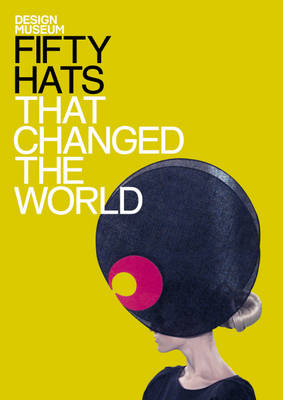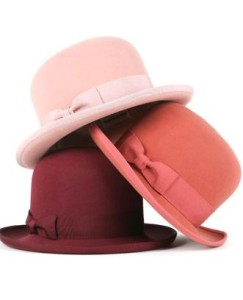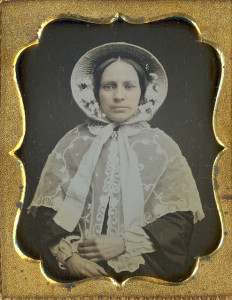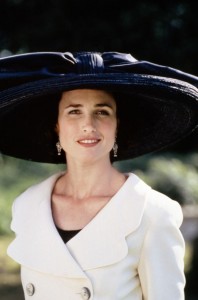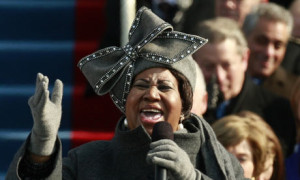50 Hats That Changed The World
by Design Museum, published in 2011
HA3 – 50 Hats is 10:41 in length, scroll down to see some text and images that go with this podcast.
I really enjoyed this book. It was a great combination of lovely pictures and short paragraphs packed with information. The writing is accessible but also requires a bit of a stretch for my vocabulary.
Hats have three possible purposes, protection, symbolic and aesthetic. I like how the books finds a balance between these three factors. It highlights how a hat is often meshed with the wearers identity. This may be on of the reasons for the decline in hat wearing after WWII combined with a general trend toward informality. I don’t know if Philip Treacy, Stephen Jones, or Noel Stewart were influential in this book, but they all got a rather prominent shout out early on.
There was an interesting quote from the book, “Everything around us is designed.” This quote seems appropriated as the book is written by the “Design” Museum, but personally I think most things more often evolve.
With a broad stroke overview, the book is heavily weighted in the 1900’s by deferring several shapes into the 1900’s, such as the bicorne which was a hat commonly worn by captains and pirates. However the first hat was an impressive crown from 1300’s, but it then skips ahead 400 years to 1789 and Marie Antoinette’s milliner. Nine well known hat shapes were highlighted for the 1800’s and a whooping 32 of the 50 hats were allocated into the 1900’s. Reasonably only 7 hats were saved for 2000’s.
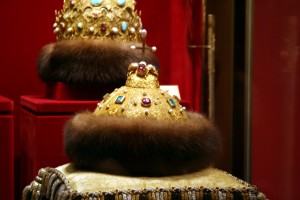
It must have been a rather daunting task to try to distill the entire history of hats into just 50 and also how to order them to be relevant and interesting. In general I think the book is fantastic, but bringing some of the older hat styles into the current times is misleading, such as the tweed flat cap has been around for 400+ years but doesn’t get a mention until the year 2000.
Areas that I really did like were the discussion about the Bowler, introduced in 1848. I was particularly thrilled to learn it was originally made by James Lock & Co.. It was commissioned by Edward Coke for his gamekeepers to protect their heads from low branches and was designed by Thomas and William Bowler. This was exciting for me because for London Hat Week in 2014, I went on a tour of James Lock and Co. on St. James Street in London. If you get a chance, it is a lovely store. The people were delightful and the hats and history are unmatched. The ladies hats are upstairs and designed by Sylvia Fletcher. I’ve not met Ms. Fletcher but one of the ladies that works there, Claire Strickland, is a really talented milliner. I met her last year at London Hat Week. Take a look at some of her amazing creativity at http://www.clairestrickland.com.
There is a lot of history involved with the bowler, which is called a Derby in the USA. One element I learned about while in college, which is hat the Bolivian women wear a bowler as part of their traditional clothes.
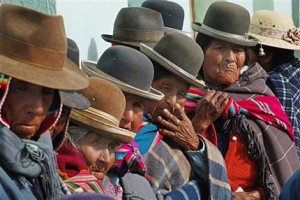
The Balaclava was a term I’d heard, but it was nice to see a picture and be able to see the spelling for the hat that I’d always referred to as a ski mask. Luckily my ski gear is all over the house right now, so I was able to do a “selfie” of my balaclava.
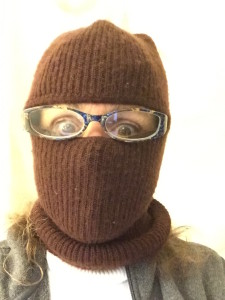
The Victorian Bonnet is fascinating with a huge amount of variation in shape, style and trimming. It was validating that it was mentioned as I’ve been working on making a strip straw Victorian bonnet for several weeks now. It is slow going, but I hope to have photos for the blog soon.
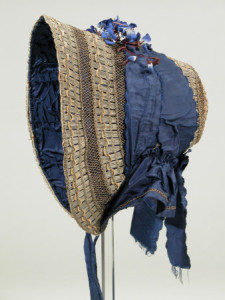
I didn’t like the mesh floppy hat by Maria Blaisse for Issey Miyake. I thought is was just a piece of sinamay that was tied with a string on a wooden head. The only redeeming element of this entry was that this may have represented the introduction of sinamay as a new material in the millinery world. Sinamay was introduced to Australia in 1990, so perhaps the 1987 introduction of the “Mesh Floppy Hat” was a big deal based off materials no necessarily its design. Sinamay is a straw type fibre from the Abaca tree, a member the banana palm family and it is pervasive in the world of millinery.
One of the great things about this books was that I learned about people I’d never heard of, such as Alice O’Reilly, who was the milliner for Cecil Beaton, who designed the hats for Audrey Hepburn in My Fair Lady.
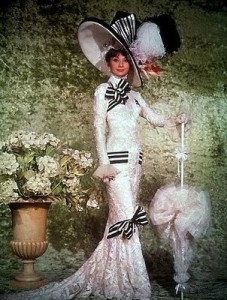
And Lindy Hemmings who designed the large black hat, worn by Andie McDowell in Four Weddings and a Funeral. That wide brimmed hat was made by Herald and Heart in London, here is a short video about this famous hat.
In addition to learning about new people, I also learned more about people that I have heard of such as Philip Sommerville. The Millinery community was saddened last November (2014) with the passing of Philip Sommerville. I knew he was a very well accomplished milliner and that many current London based milliners apprenticed with him, but I didn’t know he’d made hats for Diana, Princess of Wales. All of this made me excited all over again with a new (to me) hat block that was from Philip Sommerville’s collection at one time. I have a beautiful beret that is 1/2 done, waiting for the trimming, that I made from his old block.
I adored the second to last hat. I was Aretha Franklin’s grey felt, that she wore for the inauguration of Barack Obama. It was lovely, but I am not sure it qualifies as one of the 50 Hats that Changed the World. But it certainly was a momentous day for many people as the US inaugurated it’s first black president.
Noel Stewart finishes off the hat line up, but it is his quote that caught my attention, “People often draw parallels with sculpture and fashion, but in the case of millinery, it’s a genuine love match.” I like it.
I borrowed my book from the library, but I wish I’d bought it as an easy reference.
http://designmuseumshop.com/products/fifty-hats-that-changed-the-world
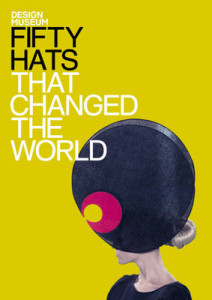
This post was originally planned to be posted in conjunction with the movie release of 50 Shades of Grey, as I thought the similarity between the 50 shades and the 50 hats was funny. However our family had a last minute opportunity to go skiing in the French Alps for a few days, and I’ll admit that I dropped everything to dust off the ski gear for a chance for a skiing adventure. Thus it is a week later than planned.
The book was better than I expected. It was interesting and informative with plenty of eye candy.
Three new words for me.
“Leitmotif of the queens style” – recurring musical idea which is associated with a particular idea, character or place.
“the classic Ska uniform” – music genre that originated in Jamaica in the late 1950’s.
“Vivienne Westwood’s elective oevure” – the body of work of a painter, composer, or author.
Iconic Heads by House of Flora by Neil Moodie, 2003. I am pretty sure I saw this piece in the Museum of Decorative Arts

